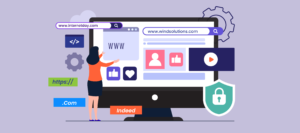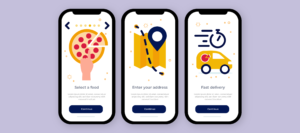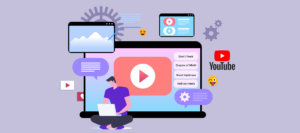Welcome to our blog post on “What are AI Chatbots? 20 Best Examples of Chatbots in 2023“. In today’s fast-paced business environment, artificial intelligence (AI) chatbots have become a game-changer for enhancing customer interactions and boosting business productivity. Chatbots are computer programs that use AI and natural language processing (NLP) technologies to simulate human-like conversations with users, making them an essential tool for businesses to provide efficient customer support, automate repetitive tasks, and drive engagement.
In this blog post, we will explore the concept of AI chatbots in-depth, including how they work, their benefits, and real-world applications. We will also highlight the top 20 examples of AI chatbot platforms that are expected to excel in 2023. These platforms offer advanced features like NLP, conversational flow management, multi-channel messaging, and integrations with popular messaging platforms, making them ideal for businesses of all sizes and industries.
Whether you are a small business owner looking to automate customer support or a marketing professional seeking innovative ways to engage with your audience, this blog post will provide valuable insights and inspiration on the best AI chatbot platforms to consider in 2023. Let’s dive in and discover the exciting world of AI chatbots and how they can revolutionize your business interactions!
AI Chatbots: What Exactly is?
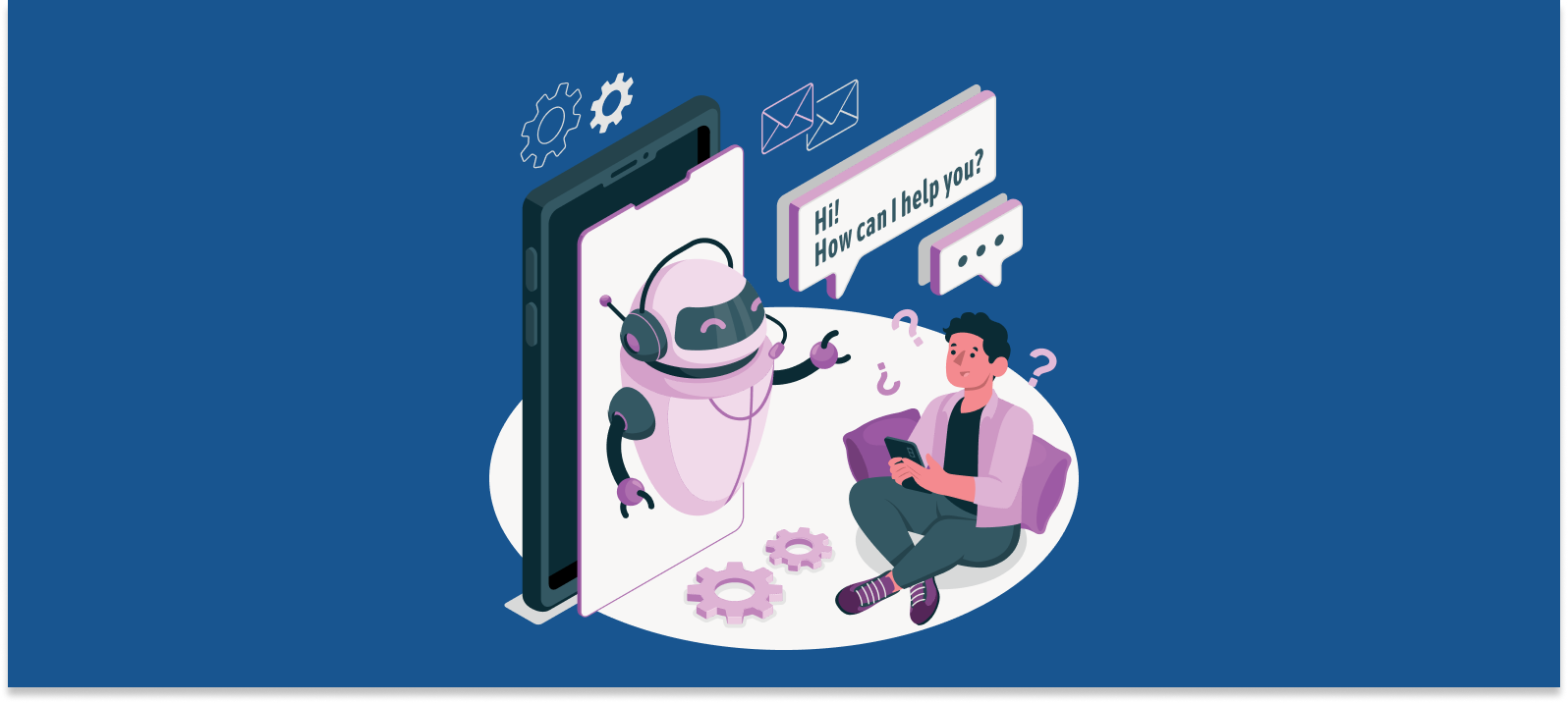
AI chatbots are computer programs that use artificial intelligence (AI) technologies to simulate human conversation. These chatbots are designed to interact with humans through messaging applications, websites, or other digital channels.
They work by analyzing the text entered by the user and using algorithms to interpret and respond to it in a human-like way. AI chatbots can perform a variety of tasks, such as answering customer service questions, providing product recommendations, or even carrying out simple transactions like placing an order or booking a reservation.
To create an AI chatbot, developers use machine learning algorithms and natural language processing (NLP) techniques. These technologies allow chatbots to learn from previous interactions and improve their responses over time, making them increasingly effective at handling complex inquiries and conversations.
How is AI used by Chatbots?
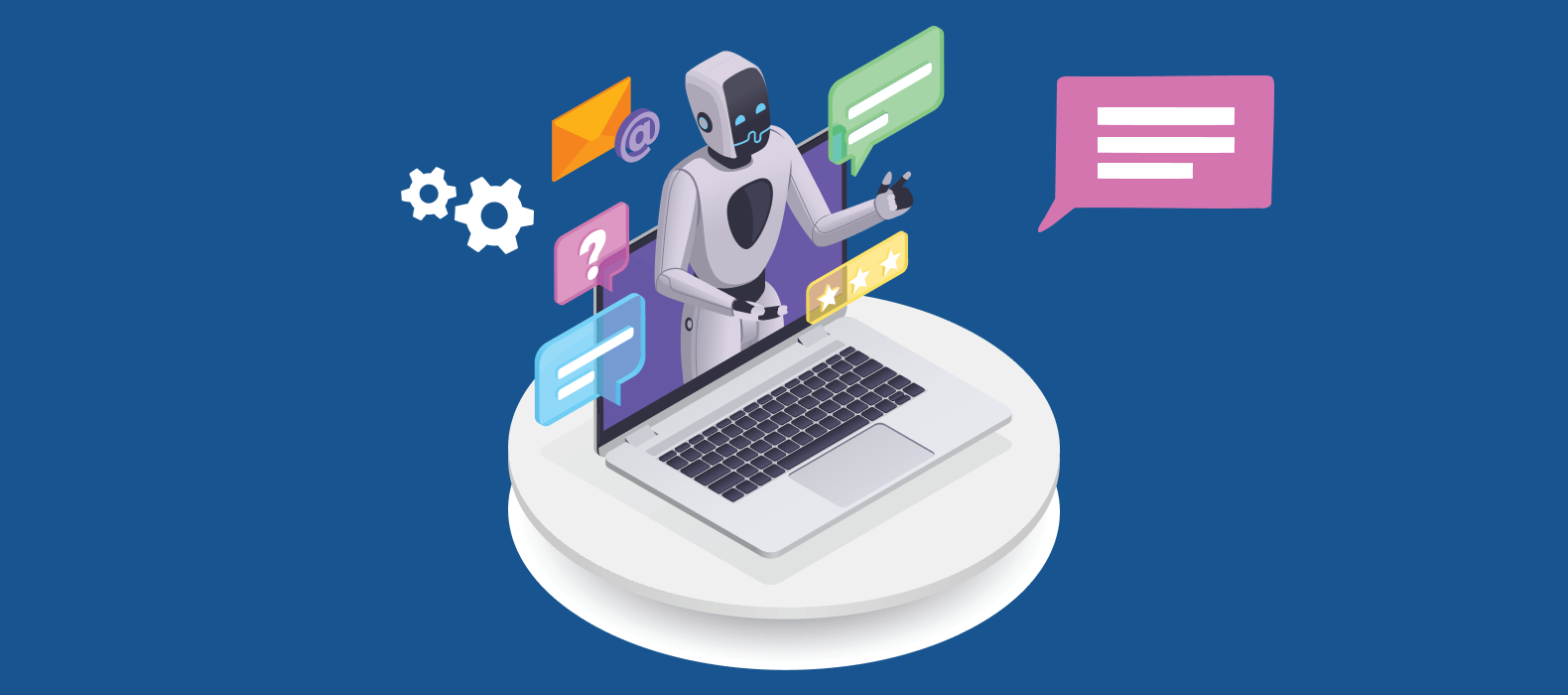
AI is a critical component of chatbots, which enables them to interact with users in a more personalized, natural, and human-like way. Chatbots use AI to understand user queries, recognize patterns, and respond appropriately. Here are some of the ways AI is used by chatbots:
- Natural Language Processing (NLP): Chatbots leverage NLP, a subfield of AI, to understand and interpret human language. It enables chatbots to process text or voice inputs from users, extract meaning from them, and generate appropriate responses. Additionally, NLP helps chatbots understand the intent, sentiment, and context of user queries, allowing for more accurate and contextually relevant responses.
- Machine Learning (ML): Chatbots utilize ML algorithms to learn from large amounts of data and improve their performance over time. ML enables chatbots to adapt and evolve their responses based on user interactions, allowing them to continuously learn and improve their conversational capabilities.
- Dialogue Management: Chatbots use AI techniques for dialogue management, which involves managing the flow of conversation with users. AI helps chatbots determine the most appropriate response based on user inputs, business rules, and contextual information. Dialogue management allows chatbots to engage in dynamic and interactive conversations with users, mimicking human-like interactions.
- Intent Recognition: Chatbots utilize AI to recognize the intent of user queries, which helps them understand the purpose or goal of the user’s message. Intent recognition allows chatbots to identify whether a user wants to ask a question, make a request, or perform an action, and respond accordingly.
- Sentiment Analysis: Chatbots use AI-powered sentiment analysis techniques to understand the emotional tone of user messages. Sentiment analysis helps chatbots identify whether a user’s message is positive, negative, or neutral, allowing for personalized responses and better understanding of user emotions.
- Personalization: AI enables chatbots to provide personalized experiences by analyzing user data, preferences, and behaviors. Chatbots can use AI algorithms to tailor responses and recommendations based on individual user profiles, leading to more relevant and engaging conversations.
- Knowledge Base Management: Chatbots can use AI to manage a knowledge base, which contains information and data that the chatbot can access to provide accurate responses to user queries. AI helps chatbots retrieve and update knowledge base information, ensuring that they have up-to-date and accurate knowledge to share with users.
Best AI Chatbots in 2023
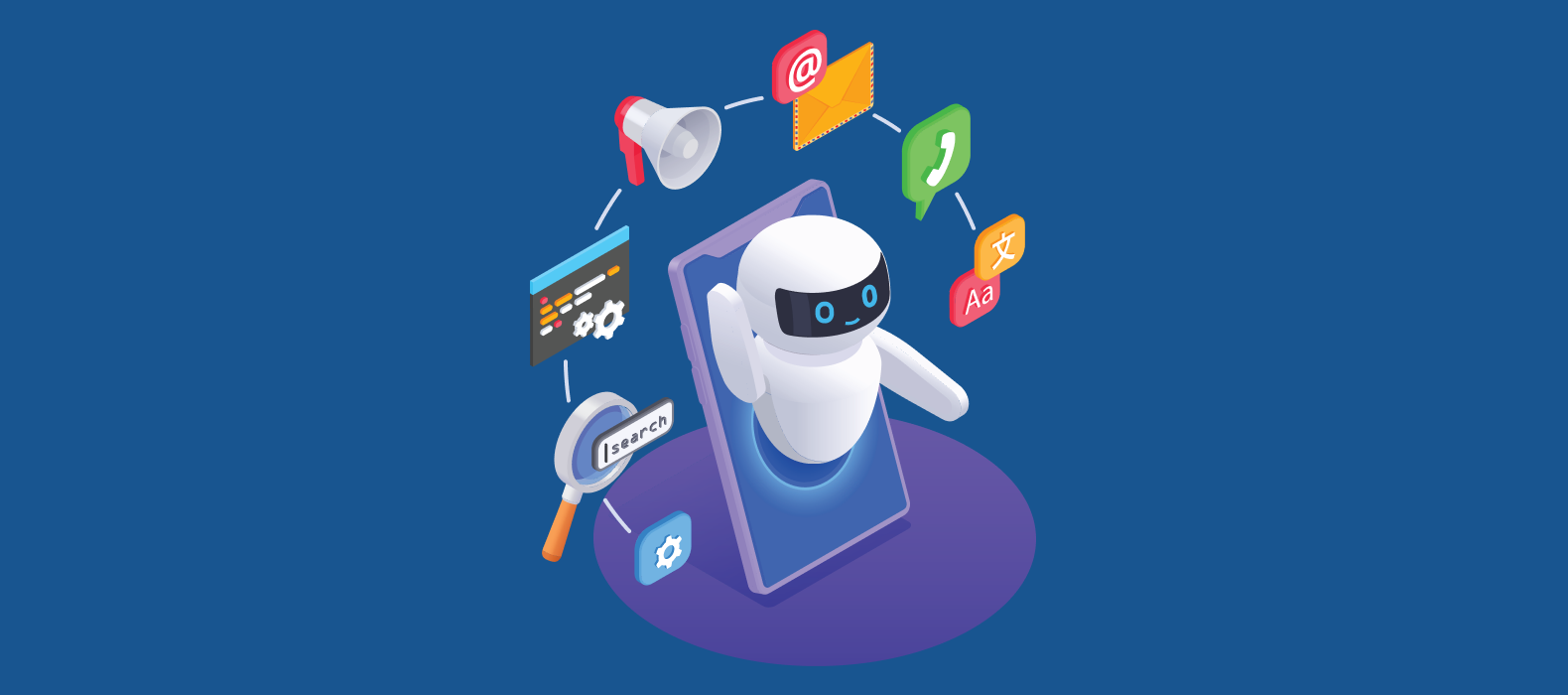
| Chatbots | Features | Industry/Application |
| Dialogflow | NLP, ML, Dialogue Management, Multi-platform integration | Customer support, Virtual assistants, E-commerce |
| IBM Watson Assistant | NLP, ML, Intent Recognition, Sentiment Analysis | Healthcare, Finance, Retail |
| Microsoft Bot Framework | NLP, ML, Dialogue Management, Multi-channel messaging | Customer service, E-commerce, Travel |
| Botpress | NLP, ML, Dialogue Management, Personalization | Banking, HR, Insurance |
| Amazon Lex | NLP, ML, Multi-platform integration, Voice recognition | Customer support, E-commerce, Virtual assistants |
| Chatfuel | Drag-and-drop chatbot builder, Multi-platform integration, Analytics | Social media, Marketing, E-commerce |
| MobileMonkey | NLP, ML, Multi-channel messaging, Lead generation | Marketing, Sales, Customer support |
| Tars | NLP, ML, Dialogue Management, Conversational forms | Lead generation, Customer support, E-commerce |
| Kore.ai | NLP, ML, Workflow automation, Task management | Enterprise, IT support, HR |
| Acquire.io | NLP, ML, Co-browsing, Live chat integration | Customer support, E-commerce, Sales |
| BotStar | NLP, ML, Conversational flow management, Multi-platform integration | Customer service, E-commerce, Virtual assistants |
| Rasa | NLP, ML, Dialogue Management, Open-source | Customer support, Virtual assistants, Healthcare |
| Landbot.io | NLP, ML, Visual chatbot builder, Multi-channel messaging | Lead generation, Customer support, E-commerce |
| Botsify | NLP, ML, Drag-and-drop chatbot builder, Multi-platform integration | Customer service, E-commerce, Content delivery |
| ChatGPT | NLP, ML, Conversational AI, OpenAI | Virtual assistants, Content creation, Customer support |
| Flow XO | NLP, ML, Workflow automation, Multi-platform integration | Marketing, Sales, Customer service |
| SnatchBot | NLP, ML, Multi-channel messaging, Analytics | NLP, ML, Multi-channel messaging, Analytics |
| Pandorabots | NLP, ML, AIML scripting, Open-source | Virtual assistants, Entertainment, Education |
| Chatra | NLP, ML, Live chat integration, Multi-platform messaging | E-commerce, Customer support, Lead generation |
| LivePerson | NLP, ML, Real-time chat, AI-powered routing | Customer support, E-commerce, Sales |
The Top 20 AI Chatbots That Can Boost Your Business

1. Dialogflow:
Dialogflow is a cloud-based conversational AI platform developed by Google that allows developers to create chatbots and voice assistants for various platforms like websites, mobile apps, messaging platforms, and smart home devices. Additionally, it uses natural language processing (NLP) to understand user input, and it can interpret and respond to queries in multiple languages.
2. IBM Watson:
IBM Watson Chatbot, also known as IBM Watson Assistant, is a conversational AI tool developed by IBM that enables businesses to create and deploy chatbots or virtual assistants for various applications such as customer support, sales, and information retrieval. It leverages natural language processing (NLP), machine learning, and other AI technologies to understand and respond to user queries in a conversational manner.
3. Tars:
TARS chatbot provides a user-friendly platform for businesses and individuals to create and deploy custom chatbots for automating conversations and enhancing user engagement in a wide range of applications. This chatbot is highly customizable and can be tailored to specific use cases and industries, such as customer support, lead generation, appointment scheduling, surveys, and more.
4. Chatfuel:
Chatfuel is a cloud-based chatbot development platform that enables businesses and individuals to create chatbots for Facebook Messenger and Telegram without requiring any programming knowledge. It provides a user-friendly interface that allows users to create conversational experiences that engage with customers in a personalized and automated manner. The platform provides several pre-built templates to simplify the process of building a chatbot. These templates cover a wide range of use cases, including customer service, e-commerce, lead generation, and more.
5. SnatchBot:
SnatchBot is a chatbot platform that allows businesses and organizations to create, deploy, and manage chatbots for various purposes. It provides a user-friendly interface and a wide range of features that enable users to design, develop, and implement chatbots without requiring extensive programming knowledge. This is a cloud-based chatbot builder that can be used to create chatbots for various industries, including e-commerce, finance, and healthcare.
6. Microsoft Bot Framework:
The Microsoft Bot Framework is a comprehensive platform that allows developers to create and deploy chatbots across various messaging platforms, such as Facebook Messenger, Microsoft Teams, Slack, and more. It provides tools, services, and libraries to build, test, and deploy chatbots with ease. At its core, a chatbot built with the Microsoft Bot Framework is a piece of software that interacts with users through text or speech-based conversations.
7. ChatGPT:
ChatGPT is a language model developed by OpenAI, called GPT-3.5, which is designed to generate human-like text responses in a conversational format. It uses deep learning techniques and has been trained on a large corpus of text from the internet, books, and other sources to learn how to understand and generate natural language.
8. Chatra:
Chatra is a chatbot software that enables businesses to communicate with their customers in real-time via chat on their websites or through popular messaging platforms like Facebook Messenger. Chatra is designed to improve customer engagement and provide personalized support to website visitors, helping businesses to enhance customer satisfaction and boost sales.
9. LivePerson:
LivePerson chatbots are designed to handle a wide range of tasks, such as answering frequently asked questions, providing product information, assisting with account inquiries, helping with online transactions, and more. They can be integrated into websites, mobile apps, messaging apps, social media platforms, and other digital channels to provide instant support and assistance to users.
10. Flow XO:
Flow XO is a chatbot platform that allows users to create and deploy chatbots across various messaging platforms, such as Facebook Messenger, Slack, WhatsApp, and more. It offers a visual interface for building chatbots without any coding skills, making it accessible to both technical and non-technical users. Additionally, it allows businesses to create chatbots for various industries, including education, healthcare, and e-commerce.
11. Pandorabots:
Pandorabots allows users to create chatbots using their Bot Building Language (BBL), which is a scripting language designed for creating conversational agents. BBL is similar to programming languages, but it is specifically tailored for building chatbots and does not require extensive coding knowledge.
12. Rasa:
Rasa is an open-source machine learning framework for building conversational AI chatbots. It provides a set of tools and libraries that allow developers to create, train, and deploy chatbots that can understand and respond to user inputs in a conversational manner. One of the key features of Rasa is its ability to handle multi-turn conversations and maintain context across different user interactions.
13. Landbot.io:
Landbot.io is a powerful platform that makes it easy for businesses to create conversational chatbots that can automate customer interactions and improve engagement. In addition, Landbot.io offers a wide range of integrations with third-party apps such as Zapier, HubSpot, and Salesforce, allowing you to connect your chatbot with your existing tools and workflows.
14. Botsify:
Botsify is a versatile platform that can be used for various purposes, including customer support, lead generation, and sales. Its easy-to-use interface and range of features make it a popular choice for businesses and individuals looking to create their own chatbots. It provides a range of features, such as natural language processing (NLP), pre-built templates, drag-and-drop interface, live chat, and integrations with various third-party services like Shopify, Zapier, and Slack. With NLP, chatbots can understand user requests and respond in a more conversational and human-like manner.
15. Acquire.io:
Acquire.io chatbot is a conversational AI-powered virtual assistant designed to interact with users in real-time and provide automated support, information, and assistance in a chat-based format. It is commonly used by businesses and organizations to enhance their customer support, sales, and marketing efforts.
16. BotStar:
BotStar is a chatbot development platform that allows users to create, customize, and deploy conversational bots for various purposes. It offers a user-friendly visual interface that doesn’t require coding skills, making it accessible to both technical and non-technical users. BotStar supports building chatbots for a wide range of channels, including websites, Facebook Messenger, WhatsApp, LINE, and more.
17. Kore.ai:
Kore.ai chatbots can be integrated with multiple channels such as websites, messaging apps, social media platforms, and more. The chatbots are designed to handle a wide range of customer interactions, from answering frequently asked questions to complex queries, providing personalized recommendations, and processing transactions.
18. MobileMonkey:
MobileMonkey is a popular chatbot platform that allows businesses and organizations to create and deploy chatbots for a wide range of purposes. MobileMonkey’s chatbots are designed to interact with users in a conversational manner and can be used for customer support, lead generation, sales, and marketing automation, among other use cases. Here are some key features and capabilities of MobileMonkey chatbots:
19. Amazon Lex:
Amazon Lex is a cloud-based service provided by Amazon Web Services (AWS) that allows developers to build conversational interfaces, commonly known as chatbots or conversational bots. This is powered by natural language processing (NLP) and machine learning technologies, making it capable of understanding and responding to user input in a conversational manner.
20. Botpress:
Botpress is an open-source platform for building and managing chatbots. It provides developers with tools and resources to create interactive chatbots that can be deployed on various messaging platforms such as Facebook Messenger, WhatsApp, Slack, and more. Additionally it is designed to be highly customizable and extensible, allowing developers to create chatbots tailored to their specific use cases and requirements.
Conclusion
In conclusion, AI chatbots have come a long way since their inception and are now widely used by businesses to improve customer engagement and satisfaction. The 20 best examples of chatbots in 2023 showcase the diverse range of applications for chatbots, from personal shopping assistants to mental health support.
As technology continues to advance, we can expect chatbots to become even more sophisticated and capable of providing seamless conversational experiences. The potential benefits of AI chatbots are immense and it’s exciting to see how they will continue to shape the way we interact with technology in the future.
FAQs
Question 1: What are AI Chatbots?
AI Chatbots are computer programs that use artificial intelligence (AI) technologies to simulate human-like conversations with users. They can understand natural language inputs and provide relevant responses, making them ideal for various customer service, sales, and support applications.
Question 2: How do AI Chatbots Work?
AI Chatbots work by processing user inputs, which can be text or voice, using natural language processing (NLP) algorithms. They then analyze the input, identify the intent and context, and generate appropriate responses using pre-defined rules or machine learning algorithms. AI Chatbots continuously learn and improve their responses based on user interactions and feedback.
Question 3: What are some examples of applications of AI Chatbots?
AI Chatbots can be used in various applications, including:
- Customer service: AI Chatbots can handle customer inquiries, provide product information, and assist with order tracking.
- Sales and marketing: AI Chatbots can engage with customers, provide personalized recommendations, and assist with sales and promotions.
- Support: AI Chatbots can troubleshoot technical issues, provide instructions, and support software and hardware.
Question 4: What are some examples of the best AI Chatbots in 2023?
Some of the best examples of AI Chatbots in 2023 are:
- Google Assistant: Google’s virtual assistant uses AI to provide personalized assistance for tasks such as setting reminders, sending messages, and answering questions.
- Amazon Alexa: Amazon’s virtual assistant uses AI to perform various tasks, including controlling smart home devices, playing music, and placing orders.
- IBM Watson Assistant: IBM’s AI-powered chatbot offers enterprise-level conversational capabilities for businesses to engage with customers and provide support.


